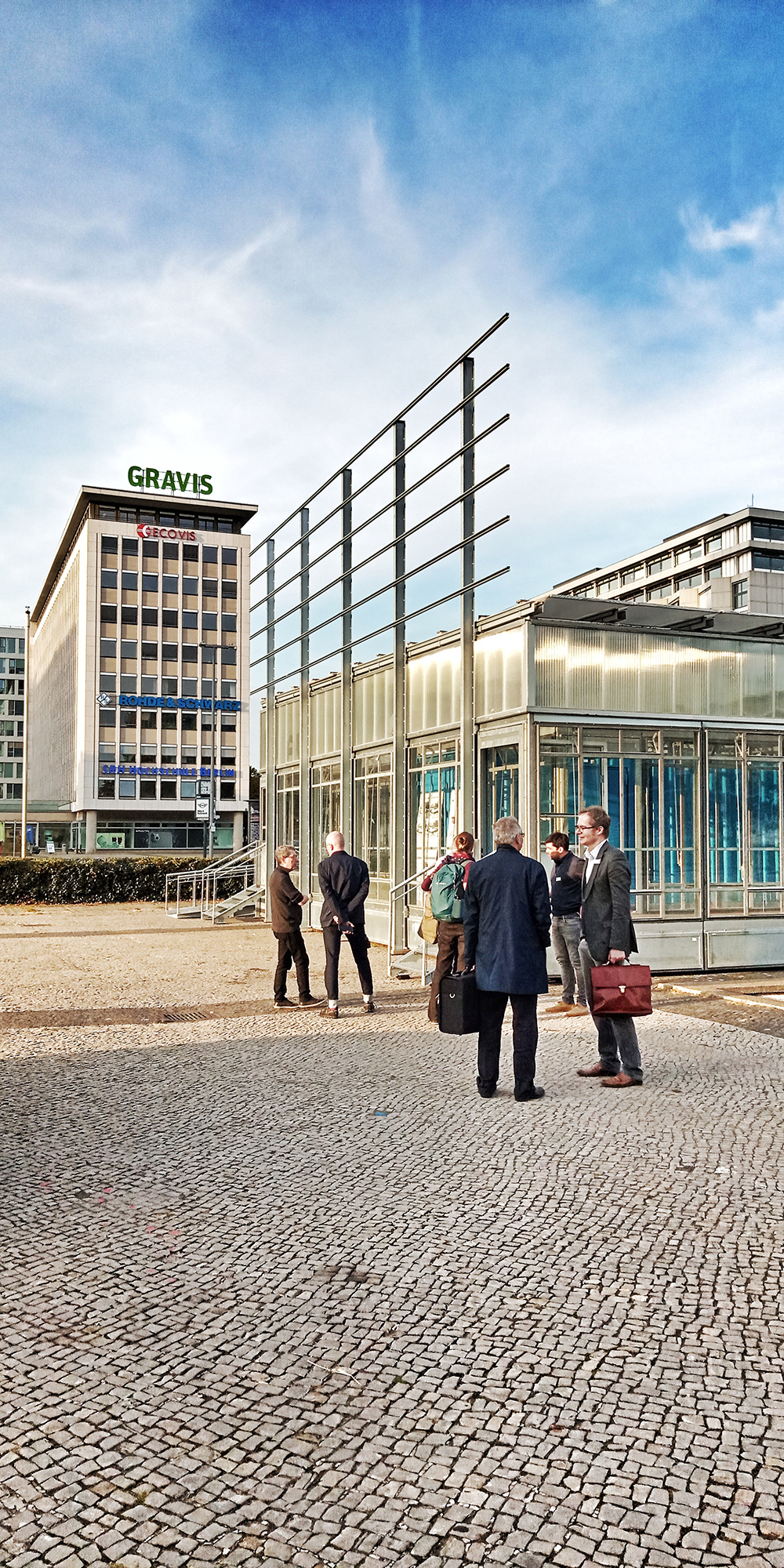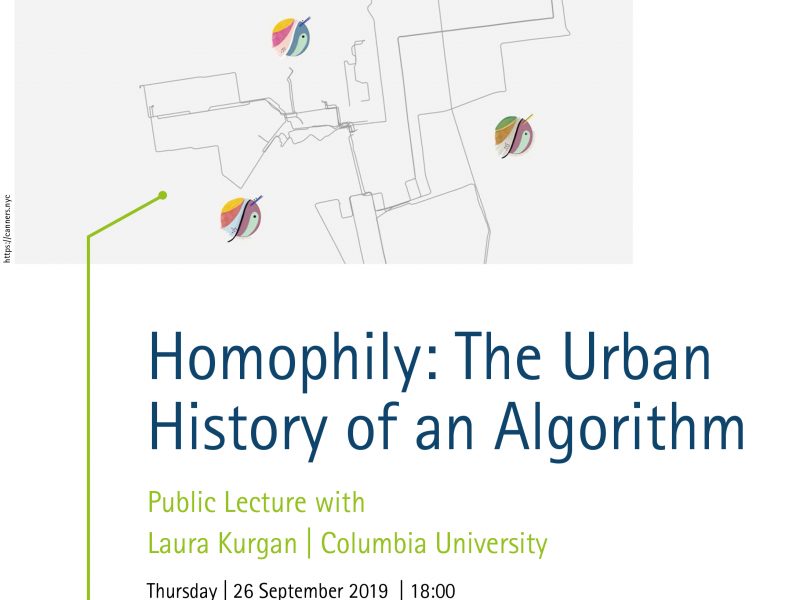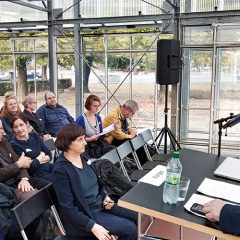Konferenz Visuelle Kommunikation in der Stadtgestaltung und -planung: Der Einfluss von Mediatisierung(en) auf die Konstruktion des Urbanen

© zukunftsgeraeusche
Homophilie: Die urbane Geschichte eines Algorithmus
Das Wort “Homophilie” wurde in einem viel zitierten Aufsatz von Paul F. Lazarsfeld und Robert K. Merton aus dem Jahr 1954 über Freundschaften in einem gemischtrassigen Wohnprojekt in Pittsburgh, Pennsylvania, geprägt. Die Forscher waren misstrauisch gegenüber der “bekannten und ungeheuerlich irreführenden Frage: Do birds of a feather flock together?” Sie kamen zu dem Schluss, dass Freundschaften nicht nur aufgrund gemeinsamer Identitäten entstehen und bestehen bleiben, sondern auch dank gemeinsamer Werte und Überzeugungen. Sie konzentrierten sich auf “rassische Einstellungen”. Die Werte, die Merton und Lazarsfeld in Pittsburgh untersuchten, waren nicht zufällig gewählt. Es ist nicht überraschend, dass die Frage der Integration trennend und ein entscheidender Faktor für Freundschaften in einem gemischtrassigen Wohnprojekt im Jahr 1947 sein würde, dennoch ist es eine Ironie der Geschichte, dass diese hochgradig kontextuelle und historisch spezifische empirische Beobachtung nachträglich als ein Gesetz des menschlichen Verhaltens genommen wurde. Das Nachleben des Konzepts war bemerkenswert, da es effektiv dazu benutzt wurde, soziale Welten nach seinem Bild zu rekonstruieren. Heute liegt die Annahme, dass Homophilie eine Regel ist, auch den sozialen und wirtschaftlichen Interaktionen im Internet zugrunde, da Plattformen das Axiom “Ähnlichkeit erzeugt Verbindung” verstärken. Was als Beschreibungen oder Fragen über das soziale Leben begann, ist zu einer Regel für Algorithmen geworden, die soziale Interaktionen online formen.
Laura Kurgan ist Professorin für Architektur an der Graduate School of Architecture Planning and Preservation der Columbia University, wo sie das Center for Spatial Research und den Lehrplan für Visual Studies leitet. Sie ist die Autorin von Close Up at a Distance: Mapping, Technology, and Politics (Zone Books, 2013) und Mitherausgeberin von Ways of Knowing Cities (Columbia Books on Architecture, erscheint 2019). Ihre Arbeiten wurden international ausgestellt, zuletzt auf der Chicago Architecture Biennial (2019), auf der Biennale Architettura di Venezia 2018, im Jerome L. Greene Science Center am Columbia’s Zuckerman Institute 2017.
Der öffentliche Vortrag ist Teil der International Conference Visual Communication in Urban Design and Planning.
Sie ist eine Kooperation zwischen dem SFB 1265 Re-Figuration von Räumen und dem IRS – Leibniz-Institut für Gesellschafts- und Raumforschung.
(Quelle: http://www.cud.tu-berlin.de/)

© CUD TU Berlin





